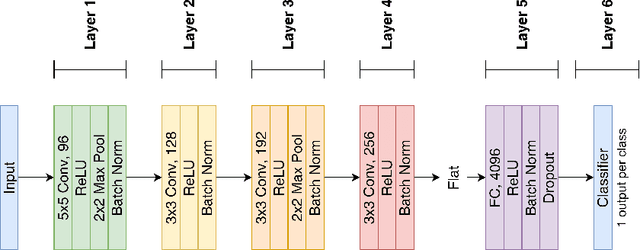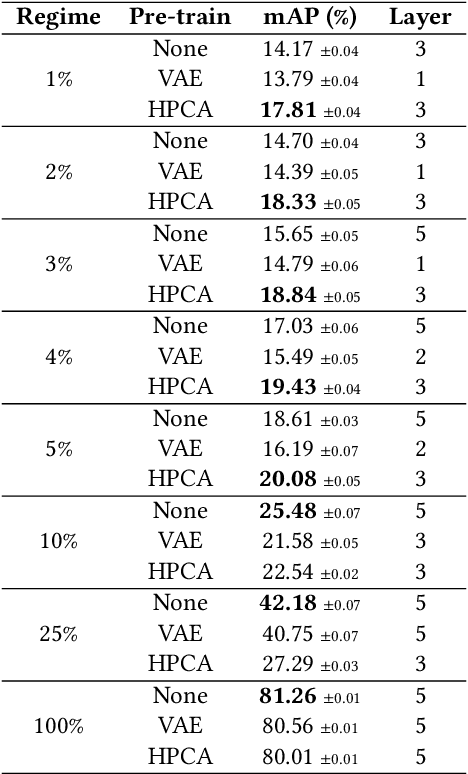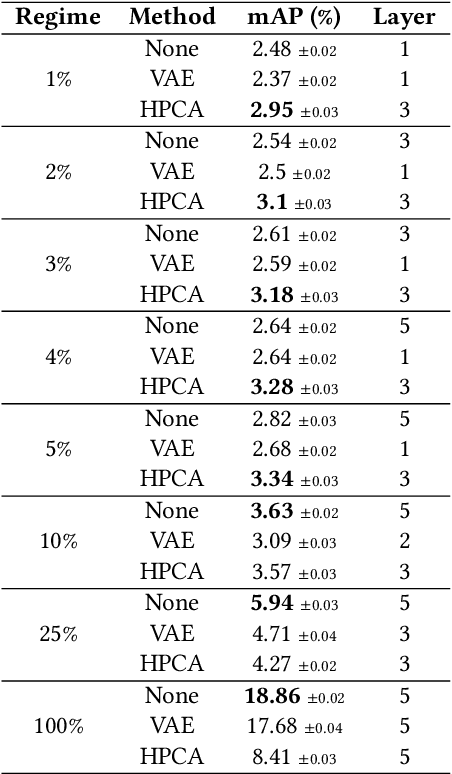Deep Features for CBIR with Scarce Data using Hebbian Learning
Paper and Code
May 18, 2022


Features extracted from Deep Neural Networks (DNNs) have proven to be very effective in the context of Content Based Image Retrieval (CBIR). In recent work, biologically inspired \textit{Hebbian} learning algorithms have shown promises for DNN training. In this contribution, we study the performance of such algorithms in the development of feature extractors for CBIR tasks. Specifically, we consider a semi-supervised learning strategy in two steps: first, an unsupervised pre-training stage is performed using Hebbian learning on the image dataset; second, the network is fine-tuned using supervised Stochastic Gradient Descent (SGD) training. For the unsupervised pre-training stage, we explore the nonlinear Hebbian Principal Component Analysis (HPCA) learning rule. For the supervised fine-tuning stage, we assume sample efficiency scenarios, in which the amount of labeled samples is just a small fraction of the whole dataset. Our experimental analysis, conducted on the CIFAR10 and CIFAR100 datasets shows that, when few labeled samples are available, our Hebbian approach provides relevant improvements compared to various alternative methods.
 Add to Chrome
Add to Chrome Add to Firefox
Add to Firefox Add to Edge
Add to Edge